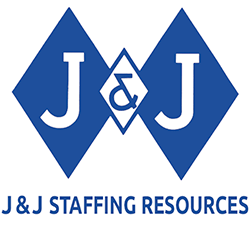Part of the struggle with filling open positions is knowing what kind of market you are currently in. If you aren’t aware of what job seekers are looking for in a position, you will likely find yourself in an open position with an overworked current staff.
That will lead to a much greater turnover rate, increasing the number of positions you have open. It becomes a vicious cycle that can be hard to break out of. Knowing precisely what is in the job lifecycle now versus a few years ago can make all the difference.
How Has the World Changed in the Last 5 Years
The question remains: what has happened in the last 5 years that would affect the job market and the mindset/interests of those doing the job seeking?
Answer: Major world events have occurred on a widespread scale, such as the COVID-19 pandemic at the start of 2020. This event still has impact and ramifications five years out. People prefer to work from their homes instead of in crowded office buildings. The expansion of technology has been a direct result of adjustments that had to be made during this uncertain time in the recent past.
Other major factors include worker strikes, inflation, changes in the cost of living, and a desire to have more control over how workers spend their lives between their jobs and their homes.
Jobs Involve More Flexibility
One of the things that employers have become more aware of in the past five years is their employees’ desire to have a better work/life balance. People no longer want to spend all their waking hours on the job or away from their families. While this desire has been slowly simmering under the surface for at least a decade, it didn’t hit the forefront of people’s minds until lockdowns happened in early 2020.
These lockdowns gave individuals more face time with their loved ones, and they didn’t want to return to how things were before. It’s been a learning curve for employers and employees to ensure workplace morale and productivity remain at all-time highs. Thus, the idea of creating a flexible work environment was born.
One of the ways you can get ahead of the curve for the current job lifecycle is to implement a plan that works best for your company’s bottom line while also helping your employees. Allow them the flexibility to have time off for family events or allow them to work from home should the situation call for it and the transition is possible for company policies.
Employees enjoy the idea of working for companies that allow them the option to pick and choose their hours within reason. Studies have shown that the typical human brain needs frequent breaks to remain at peak performance levels. On top of that, the flexibility within a workforce allows you to make more accommodations for individuals who might have mental, physical, or masked/silent disabilities.
Work from Home Is the New Norm
As we’ve previously discussed, more and more companies are moving toward a work-from-home environment or at least a hybrid one. This allows for a more positive work environment for employees and positively impacts their overall mental health. In turn, this type of arrangement benefits the company.
By allowing employees to choose where they do their work, managers and executives have seen an increase in productivity and a more highly motivated workforce. Employees are more likely to care about their work and put their best foot forward when they feel they have a bit more control over how they work. Being in an environment of comfort versus one that is cold and sometimes overwhelming has drastically changed the capabilities of most employees.
Allowing employees to take breaks and work in a manner that is most comfortable for them makes them more likely to stick with their jobs. Their personal commute costs go down, and their connection to their family and friends increases, making them a more well-rounded person.
Consider this: if your company allows employees to work remotely, you are also increasing its reach. You can now hire employees from all over the world, which can better facilitate a wider company reach within your customer base. In addition, through the expansion of technological advancements, companies have found that their overhead costs have decreased by adopting such work practices.
A Rise in Contract-Based Employment
Another way that the new wave of technology and work mindset has changed since the COVID-19 pandemic began is through how people want to approach work agreements. There has been an increase in employees looking to work in a contract-based environment versus something more permanent and binding.
Contract-based employees have increased to make the flexibility we mentioned above more likely. People want control over how much they work and when. Being in a contract, not bound by full-time employment agreements, allows employees to pick their hours and for how long they wish to be of service to a company.
Freelancing has become much more common in certain careers, such as writing-based positions. It gives the individual the opportunity to make a living around major life events that matter most to them. It also allows the company to spend less on each individual employee since the requirements on the company side are less for freelancers and contract-based employees.
More and More “Gigs” and Temporary Positions
Along with contract-based employment comes the increased trend toward looking into temporary positions or part-time employment. Some people are even putting themselves in a position to only accept work that lasts for a set period of time before moving on to the next job.
These “gigs” are helpful for both the employer and the employee. Once again, temporary employment helps the company’s bottom line because it requires less overhead per employee. Plus, it helps a company get through a busier time without feeling strapped during slower times to support an extra set of hands on deck.
No longer is it considered a life achievement to reach 10+ years or even more than 20 years. Workers today are looking more at what works for them at the moment. It’s more obvious in today’s workforce that life happens outside of work and that life dictates what each employee wants from their job. Therefore, more and more employees are looking at the short-term, not long-term.
Why J & J is The Staffing Agency to Turn To
Last year, Forbes named J & J Staffing one of the top agencies in the United States for recruitment overall and temporary hiring. This puts us in a unique position to help companies stay ahead of the latest job lifecycle trends. We understand where the industry is currently at and where it is projected to end up in the coming years.
Let us know if you are looking for guidance on how to improve your hiring and employment practices. J & J Staffing is always ready to help. Even if you are ready to take the next steps and know exactly what you want, we can easily help you post your open positions in a fashion that will get the correct candidates as fast as possible. Contact us today.
Staffing Services In Greater Philadelphia
J & J Staffing Resources is a professional staffing agency that connects local businesses to job seekers throughout the Greater Philadelphia area, including Pennsylvania, New Jersey, and Delaware.
We bring over 45 years of expertise in office, industrial, technical, and professional staffing placements as well as payroll management, and offer a wide range of services for both employers and job seekers.
Need help? J & J Staffing has offices in Newark, Bridgeport, Woodbury, Cherry Hill, Ewing, Princeton, Langhorne, and Horsham. Visit your local J & J staffing center or get started below.

